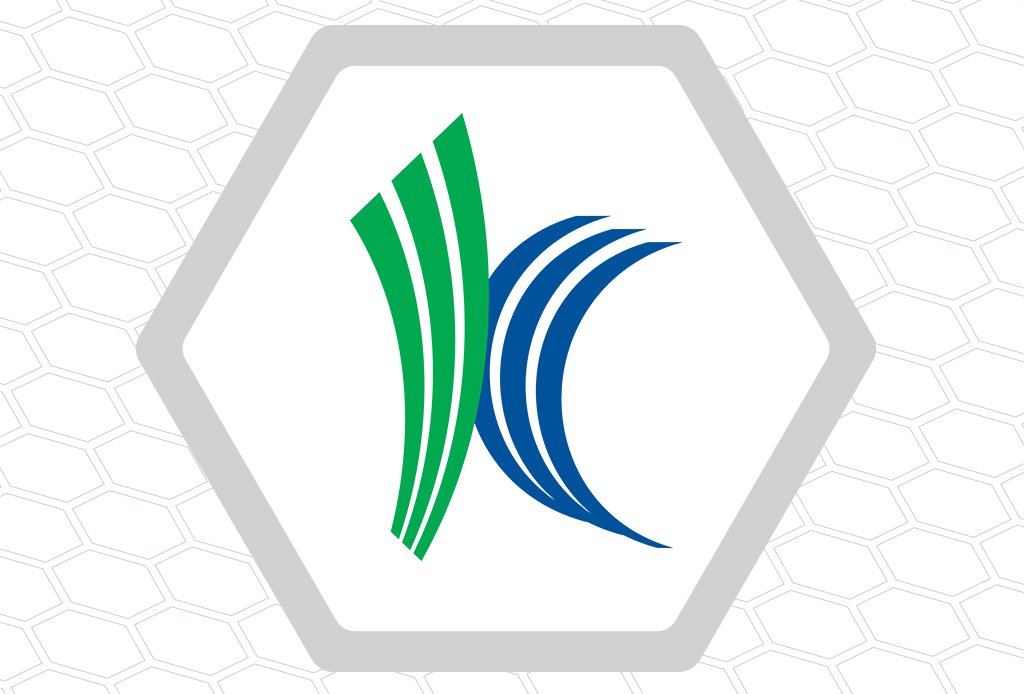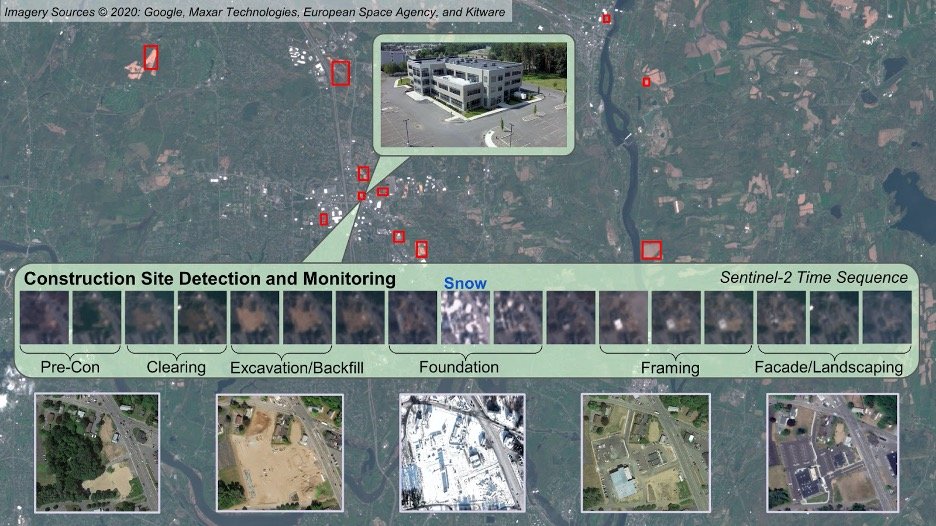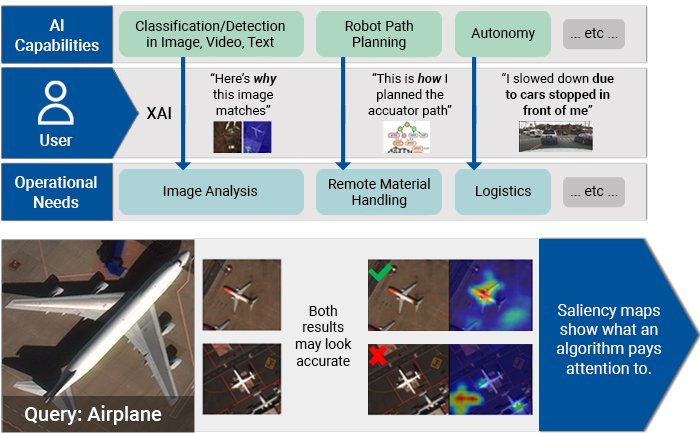Kitware at GEOINT 2021

The United States Geospatial Intelligence Foundation’s GEOINT Symposium is the largest gathering of geospatial intelligence professionals in the U.S, spanning across government, industry, and academia. As our first in-person conference since the COVID-19 pandemic began, Kitware is truly looking forward to connecting with the GEOINT community.
A long-time member of the geospatial research community, Kitware is heavily involved in GEOINT 2021 with a Training Session on deep learning with few labels; a Lightning Talk on explainable AI; a second Lightning Talk on change detection in multispectral imagery; a booth in the exhibition with live demonstrations of our open-source platforms such as the Video and Imagery Analytics for the Marine Environment toolkit (VIAME) and TeleSculptor; and Silver Sponsorship of the symposium. You can find us at Booth #815 to learn more about our geospatial capabilities and how they can help you solve difficult research problems.
Training Session
On Thursday, October 7 from 7:30 – 8:30 AM CDT, Kitware will present a deep learning training session on “How to Find Objects with Limited Labels.” While artificial intelligence and machine learning (AI/ML) continue to revolutionize analysis and decision-making for intelligence analysts and warfighters, the need for massive amounts of labeled data hinders the usefulness of this technology. The expense of labeling and the difficulty of finding instances of rare objects has become a barrier to effective AI deployment in many scenarios. In this tutorial, we will describe both unsupervised and supervised methods that attack the problem from multiple perspectives, including leveraging labels in one modality to improve detection in another modality; active learning to find rare objects or activities in large amounts of data; low-shot image and video object detection/tracking and classification via attributes; and discovering salient anomalies. We will discuss open source software that will enable analysts to create accurate detectors for rare objects with only a handful of examples. Users of these tools do not need to have programming or AI/ML expertise. The session will conclude with a demonstration of VIAME, an open-source, end-user AI/ML toolkit developed by Kitware with NOAA and DoD funding. The training session will be presented by Anthony Hoogs, Ph.D., vice president of artificial intelligence at Kitware.
Lightning Talks
Kitware also has two lightning talks to present at the conference. The first, “Preliminary Kitware Results on the IARPA SMART Program,” will summarize our progress in building a system to search through enormous volumes of satellite images from various sources to find and characterize relevant change events as they evolve over time. Kitware’s team is addressing the problems of harmonizing data over time from multiple satellites into a consistent data cube. We are then exploiting this data cube to solve the broad area search problem to find man-made change – initially construction sites. Our system, called WATCH (Wide Area Terrestrial Change Hypercube), will further categorize detected sites into stages of construction with defined geospatial and temporal bounds and will predict end dates for activities that are currently in progress (Figure 1). WATCH will be deployed at scale on AWS infrastructure and its software will be released as open source for free community use. This lightning talk will also be presented by Anthony on Wednesday, October 6 at 12:55 PM CDT.

Our second lightning talk, “Explainable Artificial Intelligence (XAI): From Image Retrieval to an Open-Source Toolkit,” addresses the lack of human understanding as to how machine learning-based systems make their decisions. XAI attempts to help end users understand and appropriately trust ML systems (Figure 2). This lightning talk will highlight common XAI problems and techniques, such as saliency maps, and cover Kitware’s work on explainable, interactive content-based image retrieval in the satellite image domain. We will also discuss our ongoing work in creating an open-source XAI toolkit, which collects data, software, and papers from the four-year DARPA XAI program into a common, searchable framework. The XAI toolkit will be of broad interest to anyone who wants to deploy AI capabilities in operational settings and needs to validate, characterize and trust AI performance across a wide range of real-world conditions and application areas. Anthony will be presenting this lightning talk on Thursday, October 7 at 3 PM CDT.

ABOUT KITWARE’S COMPUTER VISION TEAM
Kitware is a leader in AI/ML and computer vision. We use AI/ML to dramatically improve object detection and tracking, object recognition, scene understanding, and content-based retrieval. Our technical areas of focus include: Deep learning; Dataset collection and annotation; Interactive do-it-yourself AI; Explainable and ethical AI; Object detection, recognition and tracking; Complex activity, event, and threat detection; Cyber-physical systems; Image and video forensics; 3D reconstruction, point clouds, and odometry; Super resolution and enhancement; and scene understanding. We also continuously explore and participate in other research and development areas for our customers as needed.
Kitware’s Computer Vision Team recognizes the value of leveraging our advanced computer vision and deep learning capabilities to support academia, industry, and the DoD and intelligence communities. We work with various government agencies, such as the Defense Advanced Research Project Agency (DARPA), Air Force Research Laboratory (AFRL), the Office of Naval Research (ONR), Intelligence Advanced Research Projects Activity (IARPA), and the U.S. Air Force. We also partner with many academic institutions, such as the University of California at Berkeley, Columbia, Notre Dame, the University of Pennsylvania, Rutgers, the University of Maryland at College Park, and the University of Illinois, on government contracts.
To learn more about Kitware’s computer vision work, you can email us at computervision@kitware.com. We look forward to engaging with the GEOINT community and sharing information about Kitware’s ongoing research and development in AI/ML and computer vision as it relates to geospatial intelligence.